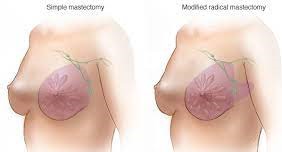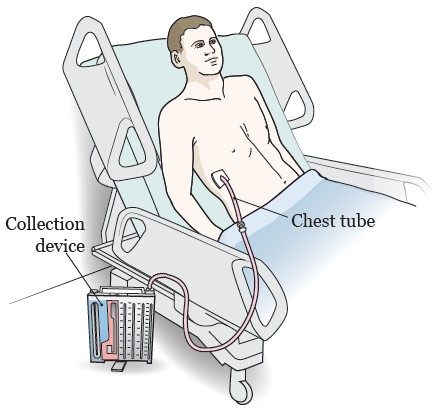A nurse is providing discharge teaching to a client following a modified left radical mastectomy with a breast expander. Which of the following statements by the client indicates an understanding of the teaching?
“will keep my left arm flexed at the elbow as much as possible"
“will have to wait 2 months before additional saline can be added to my breast expander"
“should expect less than 25 ml of secretions per day in the drainage devices."
“will perform strength-building arm exercises using a 15-pound weight."
The Correct Answer is C
Choice A reason:
"will keep my left arm flexed at the elbow as much as possible": This statement is incorrect because after a mastectomy, it's important to promote full range of motion in the affected arm to prevent complications like contractures and lymphedema.
Choice B reason:
“will have to wait 2 months before additional saline can be added to my breast expander" Typically, the process of adding saline to a breast expander begins much sooner, often within a few weeks after surgery, depending on the individual’s healing progress and the surgeon’s protocol.
Choice C reason:
"should expect less than 25 ml of secretions per day in the drainage devices":After a mastectomy, drainage devices are often placed to prevent fluid accumulation. The client should be aware that once the drainage decreases to less than 25 ml per day, it may be an indication that the drain can be removed. This shows an understanding of what to monitor postoperatively.
Choice D reason:
"will perform strength-building arm exercises using a 15-pound weight": This statement is not appropriate, especially shortly after surgery. Gradual and gentle strength-building exercises are recommended, and using a 15-pound weight could be too strenuous and potentially harmful.

Nursing Test Bank
Naxlex Comprehensive Predictor Exams
Related Questions
Correct Answer is A
Explanation
Choice A reason:
Obtaining consent for surgery is the correct answer. Obtaining informed consent for surgery is a critical and ethical step to ensure the client's rights are respected and that necessary medical interventions can be performed. However, in cases where the client is unable to provide consent due to their level of intoxication, the nurse should follow established protocols for obtaining consent from a legal guardian or
Choice B reason:
Insert an NG tube is incorrect. Inserting a nasogastric (NG) tube might be a necessary step in preparing a client for surgery in certain cases, but it is not the top priority in this situation. Obtaining consent for surgery takes precedence.
Choice C reason:
Applying ant embolic stockings is incorrect. Applying ant embolic stockings, also known as compression stockings, is an important measure to prevent blood clots (deep vein thrombosis) during and after surgery. However, obtaining consent for surgery is more urgent in an emergency situation.
Choice D reason:
Inserting an indwelling urinary catheter is incorrect. Inserting a urinary catheter might be necessary to monitor the client's urinary output during surgery, but obtaining consent for surgery is the priority action.
Correct Answer is A
Explanation
Choice A Reason:
Vigorously strip the chest tube twice daily. The nurse should clarify the prescription to "vigorously strip the chest tube twice daily" with the provider. Stripping or milking a chest tube is generally not recommended, as it can cause damage to the tube and lead to complications. The movement of fluid and air in the chest tube should be allowed to occur naturally based on the patient's own respiratory effort.
Choice B Reason:
Assist the client out of bed three times daily - This is a reasonable activity for a client with a chest tube, as mobility and deep breathing can help prevent complications.
Choice C Reason:
Notify the provider when tiddling ceases - Monitoring for tiddling (fluctuations in the water seal chamber with respiration) and notifying the provider when tiddling stops is important, as it might indicate a potential issue with the chest tube placement or functioning.
Choice D Reason:
Administer morphine 2 mg IV bolus every 3 hr PRN for pain - Administering pain relief for the client is appropriate and helps manage their comfort. Pain control is important to encourage deep breathing and prevent complications related to shallow breathing due to pain.

Whether you are a student looking to ace your exams or a practicing nurse seeking to enhance your expertise , our nursing education contents will empower you with the confidence and competence to make a difference in the lives of patients and become a respected leader in the healthcare field.
Visit Naxlex, invest in your future and unlock endless possibilities with our unparalleled nursing education contents today
Report Wrong Answer on the Current Question
Do you disagree with the answer? If yes, what is your expected answer? Explain.
Kindly be descriptive with the issue you are facing.
